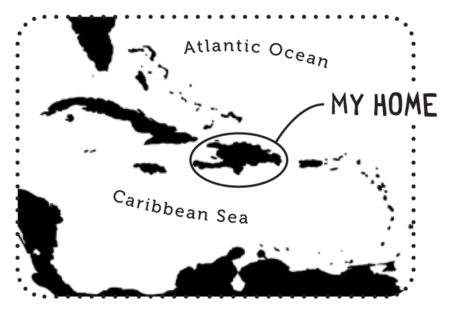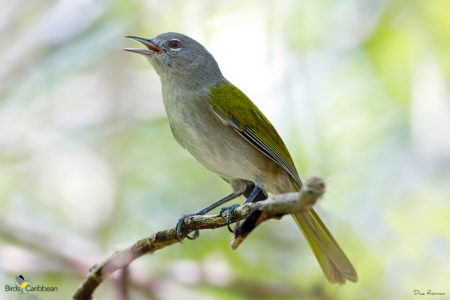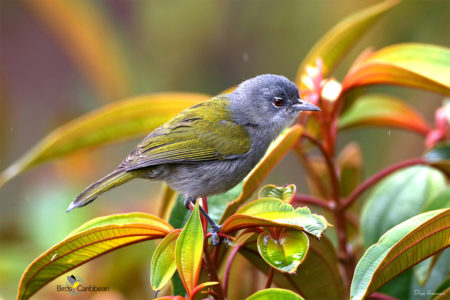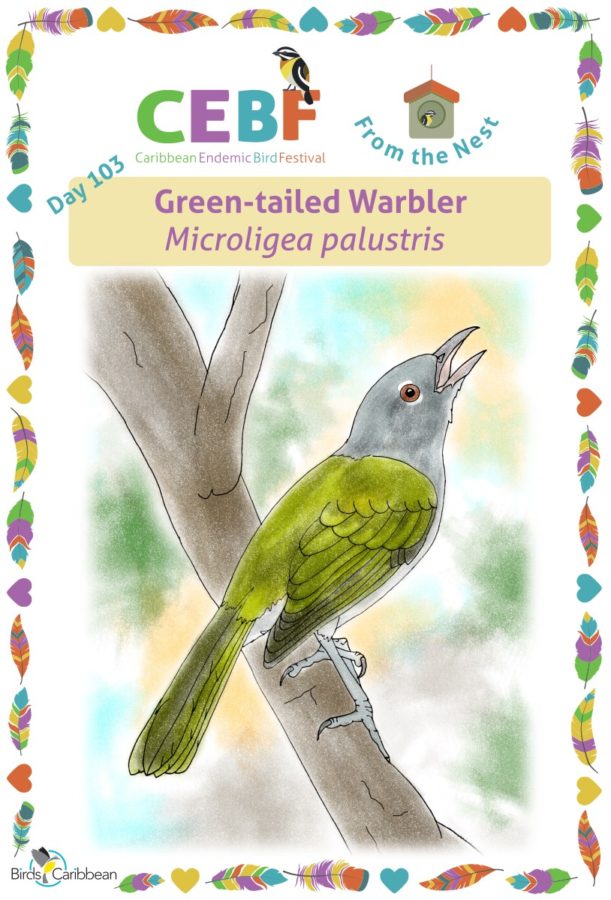Celebrate the Caribbean Endemic Bird Festival (CEBF) with us! Our theme in 2022 is “Loving Birds is Human Nature”. Have fun learning about a new endemic bird every day. We have colouring pages, puzzles, activities, and more. Download for free and enjoy nature with your family at home.
Endemic Bird of the Day: Green-tailed Warbler
 The Green-tailed Warbler has an understated beauty, without bright colors or a melodious song. This small, somewhat secretive, bird is an endemic species of the island of Hispaniola and can only be found on this island. Green-tailed warblers typically inhabit mature broadleaf forests, thickets and scrub in both wet and semi-dry areas. While mostly in the central mountain ranges in both the Dominican Republic and Haiti, they can also be found at any elevation from sea level to the highest peaks (although not much in pine forests) over most of the central part of the island.
The Green-tailed Warbler has an understated beauty, without bright colors or a melodious song. This small, somewhat secretive, bird is an endemic species of the island of Hispaniola and can only be found on this island. Green-tailed warblers typically inhabit mature broadleaf forests, thickets and scrub in both wet and semi-dry areas. While mostly in the central mountain ranges in both the Dominican Republic and Haiti, they can also be found at any elevation from sea level to the highest peaks (although not much in pine forests) over most of the central part of the island.
Sightings of this bird have been reported from a wide range of habitats, such as desert-scrub close to the coast of Puerto Alejandro near Barahona; the Guaraguao trail in Cotubanamá National Park; and in the rain forest on the coast in the Los Haitises National Park. It is also a regular sight in places like Ebano Verde Nature Preserve in the Central Mountains, and its stronghold anywhere in the Sierra de Bahoruco.
The gray plumage of the body and head has a soft, silky appearance, and contrasts with the back and wings which are a fairly bright olive-green. The irises are red with a black pupil, and it has a notable split white eye-ring which takes the form of crescents above and below the eyes. The tail is fairly long for its 12 to 14 centimeter total length. The bill is gray and is slightly chunky. Its diet consists mainly of insects.
The Green-tailed Warbler’s scientific name, Microligea palustris alludes, first, to its voice: Micro means small, and Ligea means shrill or high pitched. This describes the sharp, squeaky notes this bird makes. The word palustris means swamp or wetland, which is not the best suited since this bird is not restricted to wet habitats.
Breeding occurs from May to June, in the mountains, and possibly earlier than May, in the lowlands. Nests are cup-shaped and clutch size is 2-4 pale green, spotted eggs.
This species was classified with the New World Wood Warblers for many years, but recent studies have confirmed that it is not closely related to that large group of birds.Rather, it is part of a small family on Hispaniola – including the two palm-tanager species and the White-winged Warbler, which it resembles somewhat and can be found within mixed-species feeding flocks.
While the White-winged Warbler is considered Vulnerable due to its more restricted range, the Green-tailed Warbler population is not considered to be threatened. The destruction of broad-leafed and midrange forests, mainly from uncontrolled logging and the clearing of forests for agriculture, however, still pose a threat to the continued well-being of this species in the wild.
It is particularly rewarding to see birds like the Green-tailed Warbler, a unique species that does not disappoint, enjoying the pristine natural habitat in the wild!. Learn more about this species, including its range, photos, and calls here.
Colour in the Green-tailed Warbler
Download our West Indies Endemic Bird colouring page. Use the photos below as your guide, or you can look up pictures of the bird online or in a bird field guide if you have one. Share your coloured-in page with us by posting it online and tagging us @BirdsCaribbean #CEBFfromthenest
Listen to the calls of the Green-tailed Warbler
The Green-tailed Warbler makes repeated sharp “tsip” calls.
Puzzle of the Day
Click on the image below to do the puzzle. You can make the puzzle as easy or as hard as you like – for example, 6, 8, or 12 pieces for young children, all the way up to 1,024 pieces for those that are up for a challenge!


Activity of the Day
 FOR KIDS: Get out your colouring pencils, pens, or paints and get ready to be creative with our “My Caribbean Bird” art activity! Choose your favourite endemic Caribbean bird and draw or paint its portrait.
FOR KIDS: Get out your colouring pencils, pens, or paints and get ready to be creative with our “My Caribbean Bird” art activity! Choose your favourite endemic Caribbean bird and draw or paint its portrait.
You can download our colourful frame and get started. Not sure which bird you want to draw? want to check where your bird lives? or what its call is? Check back to all our featured Caribbean endemic birds here. OR let you imagination run wild and create your very own imaginary endemic bird using other endemic Caribbean birds as your inspiration!
Have fun making up a name for your ‘new’ Caribbean endemic bird! Where do you think your imaginary bird might live? And what sound does it make?
FOR KIDS AND ADULTS: Enjoy this video of a Green-tailed Warbler the wild!

